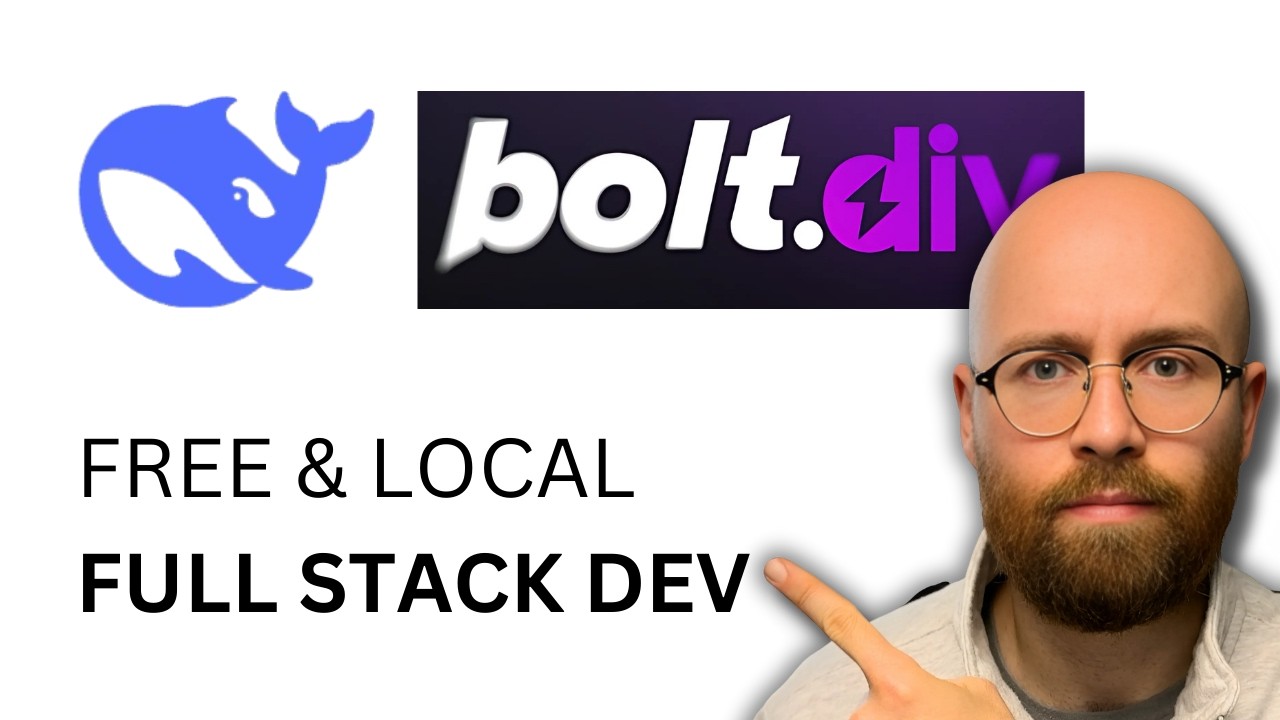The video demonstrates how to create a local development environment for full-stack applications using the Bolt.DIY platform and Deepseek-R1, allowing users to run large language models securely without writing code. It provides step-by-step instructions for setting up the environment with Docker, showcases a live demonstration of a Tic Tac Toe game, and discusses the importance of managing hardware resources when running models locally.
In the video, the presenter demonstrates how to create a local development environment for building full-stack applications without writing any code, using the Bolt.DIY platform and Deepseek-R1. The focus is on creating a secure environment similar to ChatGPT, where users can run large language models (LLMs) locally. The presenter emphasizes the importance of security, suggesting that turning off Wi-Fi can help ensure that the models are not communicating externally. The video also discusses the costs associated with using Bolt’s web version, highlighting the token usage and pricing structure for different plans.
The video begins with an introduction to Bolt, a platform that allows users to prompt, run, edit, and deploy web applications. The presenter explains the pricing model, which can become expensive due to the high token consumption for various tasks. They share personal experiences with token usage while creating simple applications, illustrating how quickly costs can accumulate. The presenter suggests that beginners might find it easier to start with ChatGPT before transitioning to Bolt for more complex projects.
To set up the local development environment, the presenter guides viewers to the Bolt.DIY GitHub repository, where they can clone the code to their local machines. They recommend using Visual Studio Code (VS Code) as a code editor and provide step-by-step instructions for cloning the repository and installing necessary dependencies. The video highlights two methods for running the application: direct installation and using Docker. The presenter opts for Docker, explaining its advantages in creating isolated environments that can be easily managed and removed.
After setting up Docker, the presenter demonstrates how to build and run the application using Docker commands. They explain how to access the application locally and showcase its functionality by integrating it with OpenAI’s API. The video includes a live demonstration of creating a simple Tic Tac Toe game, illustrating how the application generates code based on user prompts. The presenter also discusses the option of using alternative models, such as Deepseek, to avoid data storage concerns associated with OpenAI’s API.
Finally, the video transitions to using the AMA framework to run models entirely on the user’s machine. The presenter explains how to download and set up AMA, as well as how to pull and run different models. They caution viewers about the hardware requirements for running larger models, recommending smaller models for those with standard PCs. The video concludes with a reminder of the importance of managing resources effectively and encourages viewers to experiment with local development while being mindful of their machine’s capabilities.
